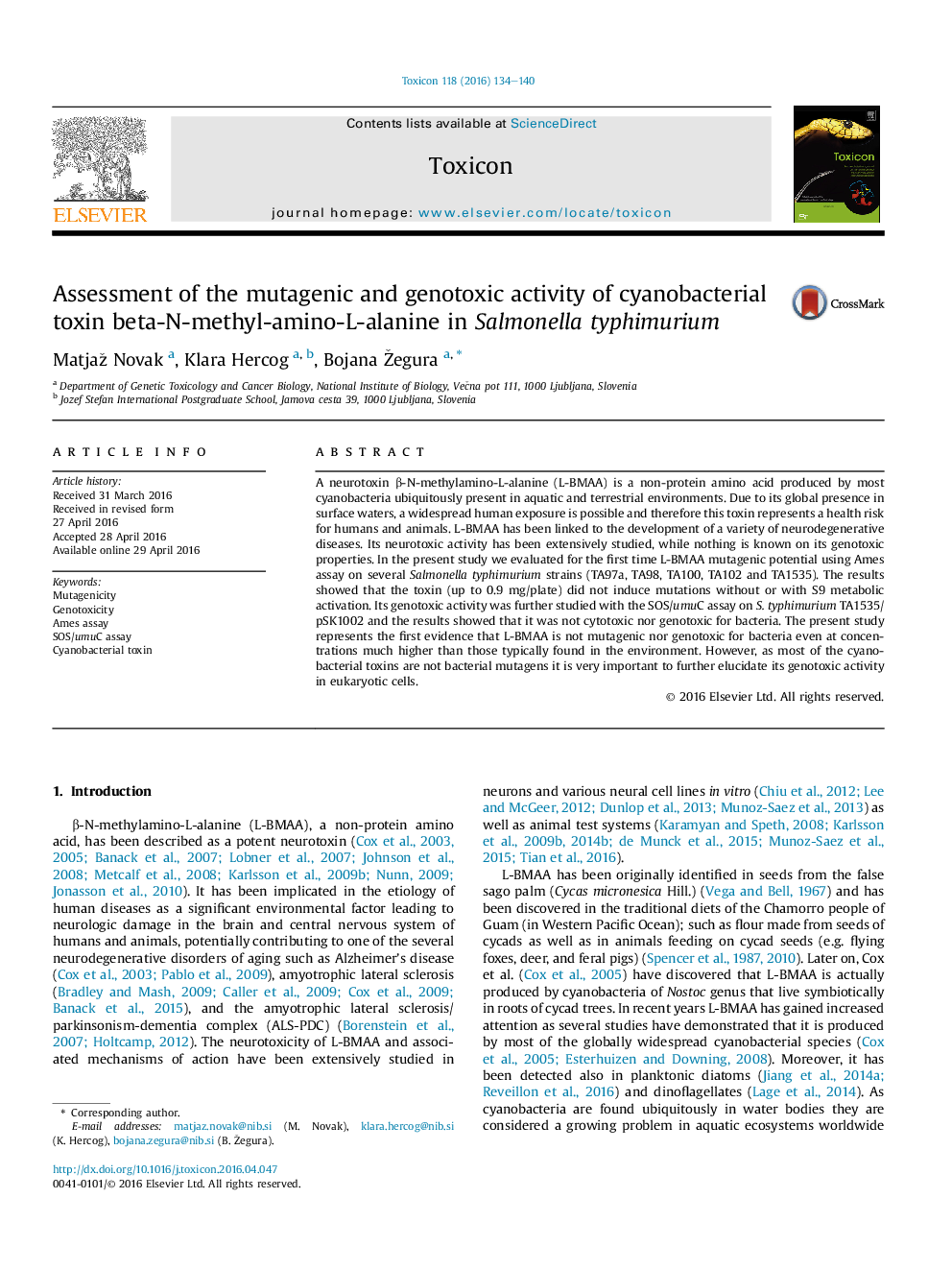| Article ID | Journal | Published Year | Pages | File Type |
|---|---|---|---|---|
| 2064097 | Toxicon | 2016 | 7 Pages |
•L-BMAA is not a bacterial mutagen.•L-BMAA is not cytotoxic for bacteria.•L-BMAA is not genotoxic for bacteria.•There are indications that L-BMAA might be genotoxic for eucaryotes.
A neurotoxin β-N-methylamino-L-alanine (L-BMAA) is a non-protein amino acid produced by most cyanobacteria ubiquitously present in aquatic and terrestrial environments. Due to its global presence in surface waters, a widespread human exposure is possible and therefore this toxin represents a health risk for humans and animals. L-BMAA has been linked to the development of a variety of neurodegenerative diseases. Its neurotoxic activity has been extensively studied, while nothing is known on its genotoxic properties. In the present study we evaluated for the first time L-BMAA mutagenic potential using Ames assay on several Salmonella typhimurium strains (TA97a, TA98, TA100, TA102 and TA1535). The results showed that the toxin (up to 0.9 mg/plate) did not induce mutations without or with S9 metabolic activation. Its genotoxic activity was further studied with the SOS/umuC assay on S. typhimurium TA1535/pSK1002 and the results showed that it was not cytotoxic nor genotoxic for bacteria. The present study represents the first evidence that L-BMAA is not mutagenic nor genotoxic for bacteria even at concentrations much higher than those typically found in the environment. However, as most of the cyanobacterial toxins are not bacterial mutagens it is very important to further elucidate its genotoxic activity in eukaryotic cells.
